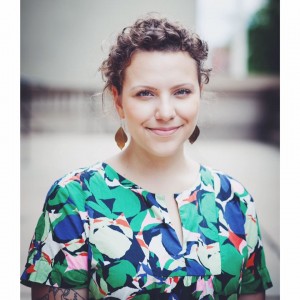 From now until the beginning of March, you can walk in to White Electric Coffee on the upper part of Westminster Street in Providence and gaze at some intriguing artwork on the walls while indulging in your favorite blend of brew and maybe even some scrumptious food. The art is courtesy of the amazingly talented Rebecca Volynsky, the executive and fund development associate at Providence CityArts for Youth. She specializes in collage and mixed media art adorned with vibrant, eye-catching colors. A native of The Creative Capital, since moving back home from Boston in 2014 Volynsky has been making waves while being very much involved in the culture of the city.
From now until the beginning of March, you can walk in to White Electric Coffee on the upper part of Westminster Street in Providence and gaze at some intriguing artwork on the walls while indulging in your favorite blend of brew and maybe even some scrumptious food. The art is courtesy of the amazingly talented Rebecca Volynsky, the executive and fund development associate at Providence CityArts for Youth. She specializes in collage and mixed media art adorned with vibrant, eye-catching colors. A native of The Creative Capital, since moving back home from Boston in 2014 Volynsky has been making waves while being very much involved in the culture of the city.
Recently we had a chat about her beginnings as an artist, her love for bagels and how art-centric Providence has become over the past couple of years.
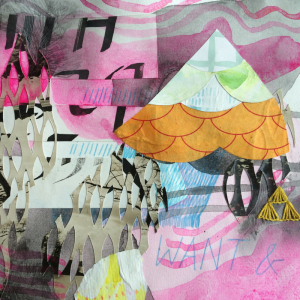 Rob Duguay: When you were growing up, what inspired you to become an artist?
Rob Duguay: When you were growing up, what inspired you to become an artist?
Rebecca Volynsky: Some of my earliest memories of drawing were with my great-grandmother. She would always post up drawings of houses in my room and that built up the creativity in my life. It was not until high school when I really started to think that I would call myself an artist or develop a creative practice. That was also when I began attending New Urban Arts and I started working with local artists like Ian Cozzens and Heidi Born. Actually Heidi taught me bookmaking in corner of the window face of White Electric. I have very vivid memories of learning these new processes through these local artists and that’s what builds my creative practice.
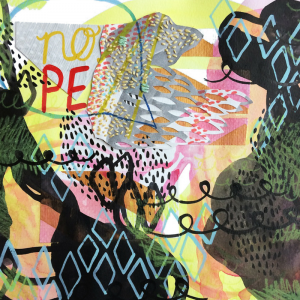 RD: Your art that is very vibrant. You use a lot of colors, you use a lot of different things and you add a lot of different dimensions. When you were first doing art, was it a growing process to develop your style or did you always have it?
RD: Your art that is very vibrant. You use a lot of colors, you use a lot of different things and you add a lot of different dimensions. When you were first doing art, was it a growing process to develop your style or did you always have it?
RV: This exhibit showcases about five years worth of artwork — not all of the artwork I’ve created over that time, but samplings so you can see that a lot of the darker work is from a long time ago. The mark making, some of the symbolism and the patterns are the same throughout. I feel like that began when I started making collages around when I was 18 and I just kept doing that throughout my life.
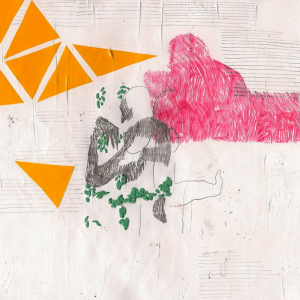 RD: When you’re not creating art, do you find yourself creating other things to fuel your creative drive?
RD: When you’re not creating art, do you find yourself creating other things to fuel your creative drive?
RV: Bagels (laughs).
RD: I actually seen you post about bagels a lot on Facebook lately. What got you into that?
RV: I grew up in Providence on the East Side; I’m first generation American Russian Jew. My family came to America from the Soviet Union in 1989 and I was born right afterward. I went to a Jewish school for nine years and then I went to Classical High School. Throughout my life there were two different bakeries on the East Side. One was called Kaplan’s Bakery and Barney’s Bakery, which 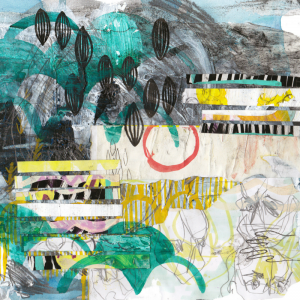 are both closed, and Davis’ Deli still exists on Hope Street. Last December I was thinking that since I couldn’t get a good bagel anywhere I might as well make my own. I’ve also lately been cooking and hosting dinner parties at my house with friends. I realized I get the same feeling when I make and share art I get when I cook for other people. It also opens up a lot of conversations with my family about their stories that only come up when we’re eating together, particularly when we’re eating Russian food. I started making bagels; I saw it as a challenge. I kept working on the process and developing baking skills to make really amazing bagels. With this previous batch I feel like I’ve finally nailed it, but unfortunately the process takes the longest time compared to the other times I’ve done it. I’ve just been practicing more and more and I feel like in a way, like I said, it’s an extension of my creative practice. There’s problem-solving involved; I feel like I’m expressing myself as I’m doing it and sharing it with other people and it’s part of my cultural identity.
are both closed, and Davis’ Deli still exists on Hope Street. Last December I was thinking that since I couldn’t get a good bagel anywhere I might as well make my own. I’ve also lately been cooking and hosting dinner parties at my house with friends. I realized I get the same feeling when I make and share art I get when I cook for other people. It also opens up a lot of conversations with my family about their stories that only come up when we’re eating together, particularly when we’re eating Russian food. I started making bagels; I saw it as a challenge. I kept working on the process and developing baking skills to make really amazing bagels. With this previous batch I feel like I’ve finally nailed it, but unfortunately the process takes the longest time compared to the other times I’ve done it. I’ve just been practicing more and more and I feel like in a way, like I said, it’s an extension of my creative practice. There’s problem-solving involved; I feel like I’m expressing myself as I’m doing it and sharing it with other people and it’s part of my cultural identity.
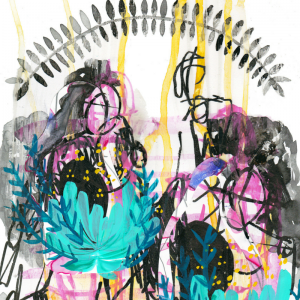 RD: Are you a butter person or a cream cheese person when it comes to what you put on a bagel?
RD: Are you a butter person or a cream cheese person when it comes to what you put on a bagel?
RV: Cream cheese.
RD: No butter? Some people are different, you know?
RV: Well it depends. I prefer to put cream cheese on a bagel, but if you got old bagels and they need to be toasted you would put butter. You would toast them in a pan with butter or you could use a toaster, but I don’t have a toaster. I need to work on that.
RD: Do you like cream cheese and chives? Plain cream cheese or even the strawberry stuff people sometimes use?
RV: Typically regular cream cheese, I do like chives and cream cheese but none of that sweet bullshit.
RD: What about lox?
RV: Absolutely. The lox bagel sandwich at White Electric is very good.
RD: I’ll have to try it next time. Jorge Elorza has been investing a lot in the arts. Last year we had the Providence International Arts Festival. Artists have been selling their art to be shown in City Hall, and the city itself has been buying art from artists to use as logos. What do you think of this major investment in the arts?
RV: As someone who grew up as a student involved in non-profit organizations, attending a lot of the youth arts programming here and one who is a fund development professional at CityArts, I have to say that it’s a very exciting thing to see happening in Providence. I feel like it’s the beginning of a new phase of people supporting the arts on a higher level than before. With the festival, although it’s an international festival, it also spotlights a lot of the local organizations. What’s exciting is that it’s coming up this year again — they have the kickoff meeting on Tuesday, March 1 at 1pm and CityArts will be attending to see how we can get involved.
RD: When I went to the festival I liked how it showcased Providence’s diversity. We’re more than just one style of art, we’re more than just one style of music, we have all sorts of things going on. It’s going to interesting to see what they do this year to help it grow.
RV: It definitely showcases a lot of the different organizations in the city, but I do feel like it could be more. What if it expanded further down to the West Side, the South Side or perhaps brought people into neighborhoods they’ve never explored before? That’s what I’m personally interested in. I don’t know what that means to other people or organizations, but we’ll see how that works this year.
RD: Say a kid from Classical High School or Central High School comes across the street to White Electric and sees your art or they’re next door at New Urban Arts where they probably know you because you’re involved there. They come into White Electric and they’re inspired by your art, maybe they want to come to talk to you and ask for advice on where they should start to get involved in the arts scene and make it somewhat sustainable. What would you say?
RV: I feel the first step to making any arts community grow is to show up for one another. If you cannot afford to purchase a piece, showing up to exhibitions, warehouse shows, formal galleries or even fundraisers is part of the first step when it comes to getting involved. The community in Providence is small enough that it’s happening all the time. In high school I did a lot of that, I went to shows at AS220, I did my research on what was happening and that’s what sparked my curiosity and that’s what made me get involved.
Stop by White Electric Coffee on 711 Westminster Street in Providence: http://www.whiteelectriccoffee.com
Rebecca Volynsky’s Website: http://www.rvolynsky.com


